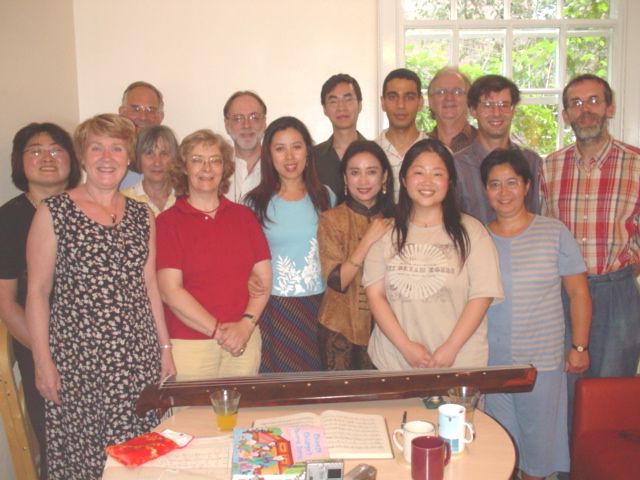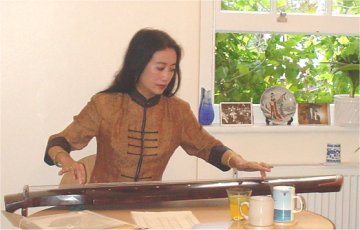
 |
For the Silk Road Exhibition, Yoyo Ma's Silk Road Ensemble performed in the Proms. As well as Chinese music, there was also music from Mongolia, Armenia, India and Iran. The Proms also featured a performance of Bright Sheng's highly contemporary piece for four Chinese instruments and symphony orchestra. In addition, there were performances of music by Tan Dun and Zhou Long.
In ancient times, the qin was widely played by people of all walks of life, and by women at least as much as by men. In the Shi Jing (Book of Odes), there is a passage which says "Fair young maidens, let us welcome them with qin and se". In the Zhou dynasty, (3100-221 BC), it was widely played by song girls, courtesans etc., some of them becoming quite famous. In the Han Dynasty, famous names included Cai Wenji, who as a child, when she heard her father break a string while playing his qin, is said to have been able tell immediately which string he broke. Guanyin, the bodhisattva of compassion, is sometimes depicted playing a qin.
By the Tang Dynasty, however, the qin had become primarily the instrument of the literati, and women were strongly discouraged from playing, or even listening to, qin music. Out of a list of 85 famous qin players compiled in the Tang dynasty, only 3 were women. There were numerous rules specifying who could and who could not hear or play the qin. It was even said that a qin should be stored away from "dust, dirt, places where women live...". Nevertheless, there were a number of courtesans who were famous for their qin playing skills. They were analogous to the geisha of Japan. Many of them became Daoist nuns when they became too old to be courtesans, as it was the only secure way to obtain food, shelter and respectability.
In the last few decades, with the revival of qin music in China, women are once again playing in at least equal numbers to men. Yip Mingmei's qin teacher, Tsar Teh Yun, is the most important qin player in Hong Kong today. She is 100 years old this year, and still plays.
There were 3 streams of qin culture: for high-ranking officials, the qin was a ritual instrument; for scholars, it was a Daoist instrument; for court musicians it was purely a musical instrument. For the first two of these, technical virtuosity was unimportant, indeed was often condemned as superficial. For the officials and scholars, though the pure and quiet tones elevated the mind (and body) to a meditative state. Many authors, e.g. Zhuangzi and Laozi, mentioned its use for regulating the breath and the qi. Many old documents exhort qin players to do finger exercises and taiqi. This is important for those who play qin in order to nurture life. It is not necessary for those who treat it purely as a musical instrument.
Qin playing has similarities to taiqi and calligraphy,
as well as to yoga. The long slides and long vibrati create space, as does
the "flying white" (spaces where you don't see any ink) in calligraphy.
In these spaces one can rest the spirit, which is perhaps why qin
players tend to live a long time. The sequence of long slides in Ping
Sha Luo Yan are a good example. Literati players play up to 6 of these,
even though they soon cease to be audible. Musicians, on the other hand,
often play only about two, there being no point in playing more when they
cannot be heard. With other instruments, such as the zheng, the
means to create these spaces does not exist.
 |
Yip Mingmei plays Ping Sha Luo Yan |
Copyright the London Youlan Qin Society, September
2004. All rights reserved.